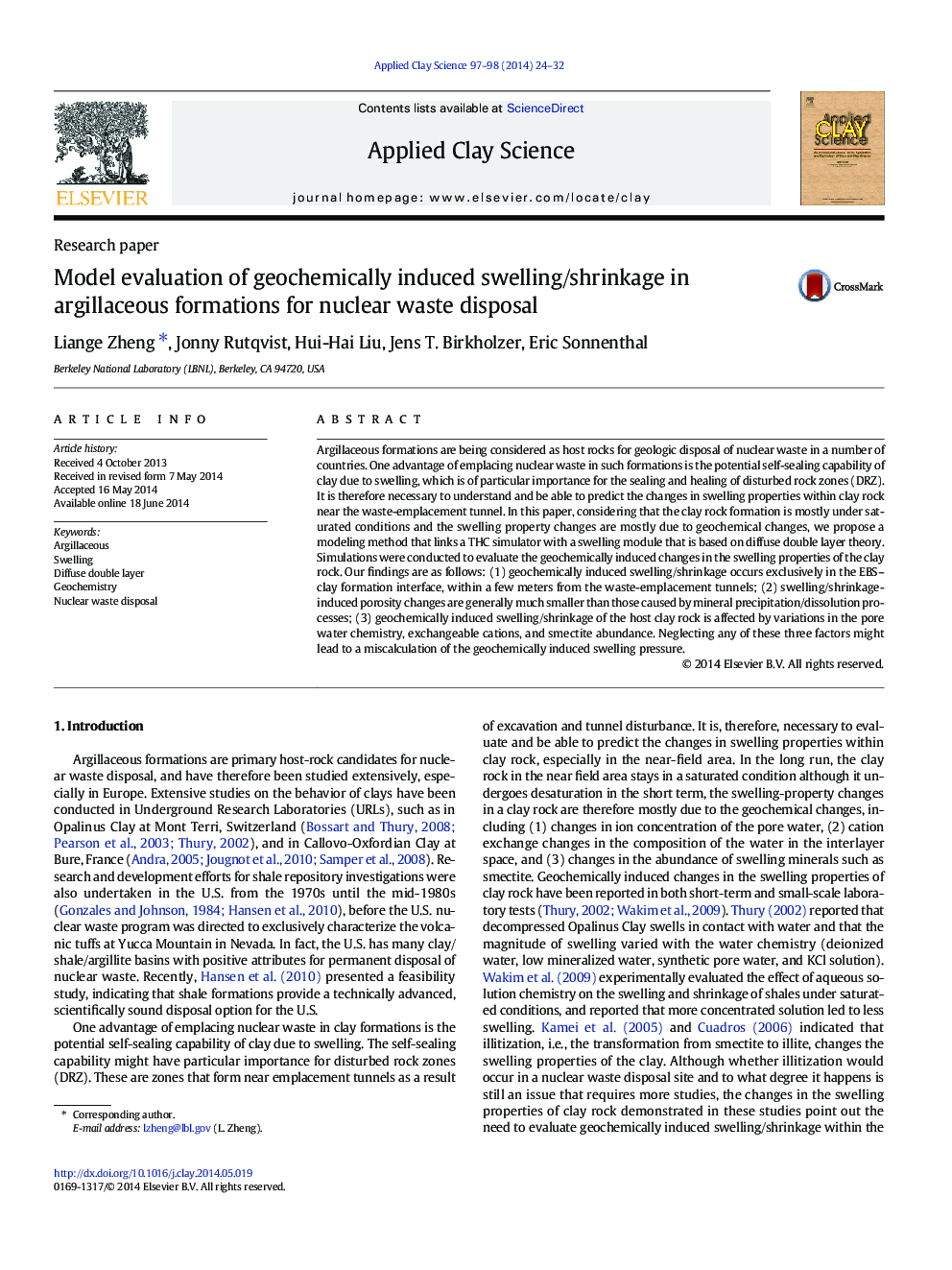| Article ID | Journal | Published Year | Pages | File Type |
|---|---|---|---|---|
| 1694652 | Applied Clay Science | 2014 | 9 Pages |
•Modify the DDL theory-based swelling pressure equations for clay formation•Link these equations to THC code TOUGHREACT•Evaluate the geochemically induced changes in the swelling properties in clay•Find combination of multiple geochemical processes affecting swelling of clay
Argillaceous formations are being considered as host rocks for geologic disposal of nuclear waste in a number of countries. One advantage of emplacing nuclear waste in such formations is the potential self-sealing capability of clay due to swelling, which is of particular importance for the sealing and healing of disturbed rock zones (DRZ). It is therefore necessary to understand and be able to predict the changes in swelling properties within clay rock near the waste-emplacement tunnel. In this paper, considering that the clay rock formation is mostly under saturated conditions and the swelling property changes are mostly due to geochemical changes, we propose a modeling method that links a THC simulator with a swelling module that is based on diffuse double layer theory. Simulations were conducted to evaluate the geochemically induced changes in the swelling properties of the clay rock. Our findings are as follows: (1) geochemically induced swelling/shrinkage occurs exclusively in the EBS–clay formation interface, within a few meters from the waste-emplacement tunnels; (2) swelling/shrinkage-induced porosity changes are generally much smaller than those caused by mineral precipitation/dissolution processes; (3) geochemically induced swelling/shrinkage of the host clay rock is affected by variations in the pore water chemistry, exchangeable cations, and smectite abundance. Neglecting any of these three factors might lead to a miscalculation of the geochemically induced swelling pressure.
